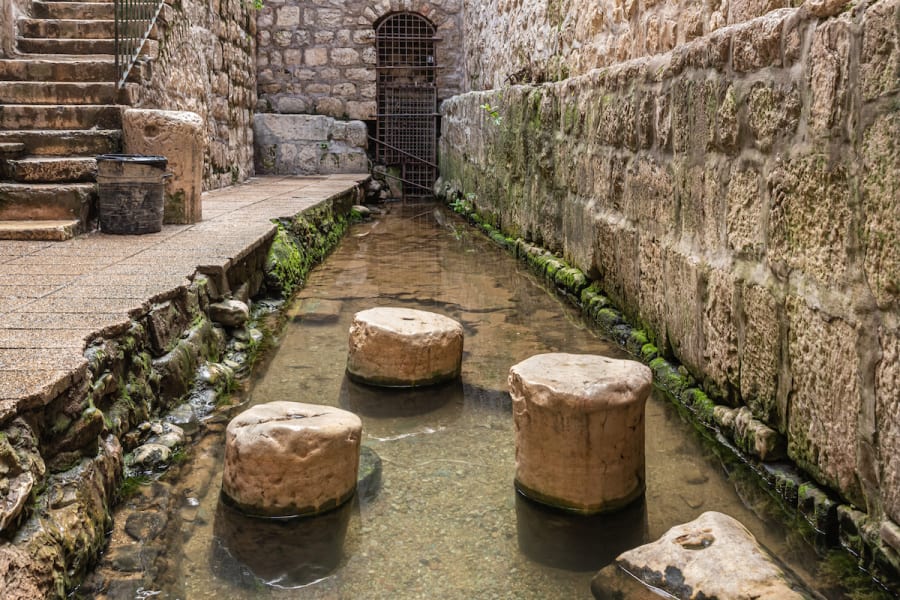Steps of Siloam Pool, site of one of Jesus’ greatest miracles, unearthed in excavations
The 2,700-year-old site is expected to open soon

Ongoing excavations at the Pool of Siloam in the City of David have uncovered more steps from the pool, the site believed to be the location of one of Jesus's healing miracles.
According to the Gospel of John, Jesus instructs a blind man to wash in the pool to be healed.
“Go,” he told him, “wash in the Pool of Siloam” [which means “sent”]. So, the man went and washed, and came home seeing.” (John 9:7)
The pool, originally built during the reign of King Hezekiah, was constructed to keep Jerusalem’s water supply within the city during a siege.
During the Hasmonean period, the pool was apparently expanded and improved, including the addition of the steps, which were uncovered in the most recent excavation.
The pool was later destroyed and covered over after the Roman destruction of the Second Temple in Jerusalem in 70 A.D.
In 2004, the pool was accidentally discovered when the Hagihon municipal water company began digging for a sewer improvement project.
Archaeologists working with the Israel Antiquities Authority (IAA) hope to excavate the entire pool and turn it into a tourism site, as only a small portion has been available to the public since its discovery in 2004.
Earlier this year, the IAA, the Israel National Parks Authority and the City of David Foundation announced that the Pool of Siloam would be opened to the public in the near future.
Ze’ev Orenstein, director of International Affairs for the City of David Foundation, said excavations in the City of David, “particularly of the Pool of Siloam and the Pilgrimage Road, serve as one of the greatest affirmations of that heritage and the millennia-old bond Jews and Christians have with Jerusalem.”
Orenstein said the path from the Pool of Siloam up to the Temple Mount was “the most significant half-mile on the planet.”
“There is no half-mile anywhere on Earth which means more to more people – not to millions, but to billions — than the half-mile that is the City of David,” he said.
While scholars have debated whether the pool could have been used as a mikveh (a small pool used for ritual purity washing), the recently excavated Pilgrim’s Path indicates that there was a connection to the Temple. The Pilgrim’s Path goes directly from the Pool of Siloam up to the Southern Steps of the Temple Mount.
During the Second Temple period, Jewish pilgrims ascended the Temple Mount for the Feast of Tabernacles (Sukkot). It is believed they would come to watch the priest draw water from the pool in a golden pitcher in a libation ceremony.
The water would be transferred by the priests in a festive procession with music and shouting, reaching the temple where the High Priest would then pour it out over the altar while reciting praises from Psalm 118.
The ceremony was a joyful occasion, but also part of the Jewish prayers for God to send the autumn rains, which usually begin around Sukkot.
In recent years, a group from the Temple Institute has performed a reenactment of the water libation ceremony at the Pool of Siloam.

The All Israel News Staff is a team of journalists in Israel.
You might also like to read this:















